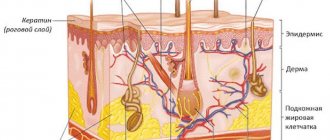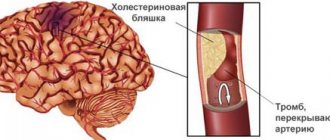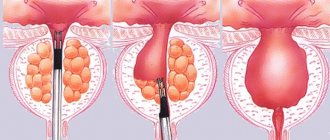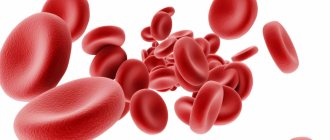Published: 06/20/2012 Updated: 05/20/2021
In the most developed Western countries, at least 20% of people over 30 years of age are overweight. Over the past 10 years alone, the number of overweight people in the United States has increased by 8%. Obesity is a risk factor for the development of many chronic diseases, including gallbladder disease, liver disease, hypertension, sleep apnea, osteoarthritis, and certain types of cancer (breast and colorectal cancer).
Among such individuals, the mortality rate from appendicitis is 2 times higher (due to complications of anesthesia and surgery), accidents occur more often with them, and they have an increased incidence of non-insulin-dependent diabetes mellitus and gout.
It has been scientifically proven that the accumulation of 4-5 kg of excess fat mass in the body creates that dangerous shift in metabolism, which is sufficient for the development of atherosclerosis. If we take the age of 20 as a starting point, then the accumulation of this amount of fat, as a rule, occurs by 30 years.
What is meant by obesity?
Obesity is an excessive accumulation of triglycerides in adipose tissue cells (in men, at least 20%, in women, 25% of body weight, or a body mass index of more than 30 kg/m2).
Obesity should be distinguished from overweight. Obesity is understood as excessive development of adipose tissue, and overweight is said when body weight exceeds a certain standard or ideal indicator. A person who is close to their ideal weight can be overweight (but not obese). This applies mainly to people who regularly engage in sports. Therefore, determining the level of body fat may be more important for clinical practice than measuring height and weight. The most widely used method for determining the fat accumulation index is the Broca calculation (height (cm) -100 for men or -105 for women) or the calculation of body mass index (BMI).
According to the classification approved by the World Health Organization, a BMI of less than 18.5 corresponds to underweight; 18.5-24.9 - normal (recommended BMI standards); 25-29.9 - excess; 30 and above - obesity. BMI is also an indicator of the risk of complications associated with obesity, as it correlates with morbidity and mortality. At an index of 28 kg/m2 (the relative risk of developing arterial hypertension increases by 2.9 times) and above, treatment is necessary. A body mass index of about 30 corresponds to being 30% over ideal weight. It is from this value that there is a noticeable increase in mortality due to obesity. With a BMI above 40, the risk associated with obesity is comparable to the health hazard associated with hypertension and heavy smoking. The lowest overall mortality occurs among people with a BMI below 21 kg/m2.
Assessing the degree and type of obesity
| Index | Broca's formula | Body mass index, kg/m2 |
| Norm | ±10% of ideal | Less than 25 |
| Overweight | Up to +30% | 26-29 |
| Obesity: | ||
| I degree | 31-50% | 30-34 |
| II degree | 50-99% | 35-39 |
| III degree | More than 100% | More than 40 |
Obesity treatment
To treat obesity, depending on the reasons that caused it, the doctor may prescribe:
- Diet;
- Physical activity;
- Drug treatment;
- Surgical treatment of obesity;
- Help from a psychologist.
The treatment regimen for obesity is determined by a nutritionist individually for each patient. A clinically significant result of obesity treatment is considered to be a decrease in body weight by 5–10% from the initial state, an improvement in the health and well-being of the patient.
Diet
The diet is prescribed by a nutritionist based on the degree of obesity and the patient’s health status.
In general, the diet consists of excluding from the diet:
- flour;
- sweet;
- cakes and pastries;
- fatty fish, meat and sausages;
- fatty dairy products;
- salted and pickled vegetables;
- sweet drinks;
- sweet fruits;
- fried foods.
Instead of excluded foods, the diet includes:
- whole grains;
- dietary varieties of bread;
- soups;
- cereals;
- green beans and peas;
- vegetables;
- fruits.
For each patient, a nutritionist individually creates a nutrition program for the most effective weight loss.
Physical activity
The following will help increase your daily calorie expenditure:
- physical education classes;
- aerobics;
- swimming;
- cardio exercises;
- walking 10,000 steps per day;
- other physical activity.
The doctor will prescribe a list of required daily physical activity individually based on the patient’s health condition.
Drug treatment
Treatment of obesity with drugs is carried out in order to eliminate the causes that caused obesity:
- In case of hormonal imbalance, medications are prescribed that bring hormone levels back to normal.
- For inflammatory diseases of the brain, the doctor prescribes antibiotics and anti-inflammatory drugs.
- For psychological problems, antidepressants are prescribed.
- In case of eating disorders, the doctor prescribes medications that reduce appetite.
- for other health problems that lead to obesity, medications are prescribed that can eliminate these problems.
Medicines in the treatment of obesity are not used as a primary means, but as part of an individual strategy aimed at losing weight for the patient, and are aimed at treating the diseases that caused obesity.
Surgical treatment of obesity
Among the surgical methods used against obesity are:
- Liposuction;
- Stomach reduction;
- Decreased absorption capacity of the gastrointestinal tract.
Liposuction
Surgical removal of subcutaneous fat for the purpose of body contouring. The operation gives a permanent effect. Liposuction is used when other methods of combating obesity and excess weight do not provide the desired results.
The operation is performed if there are no contraindications. Liposuction is preceded by consultation with various medical specialists. The operation is performed under general anesthesia or local anesthesia.
The surgeon injects a special solution into the fat layer, makes several incisions, into which thin tubes are inserted to suck out the fat, connected to a vacuum pump. Small areas of fat can be suctioned out with large plastic syringes.
After the operation, drains are installed in the incisions, the wounds are sutured and a tight bandage is installed. After surgery, the patient follows the doctor's postoperative recommendations for faster and more successful healing and recovery.
Stomach reduction
The stomach is reduced so that the patient eats less and gets full faster, thereby losing weight. This obesity treatment measure is used when other non-surgical treatments do not work.
The surgeon reduces the stomach in one of 3 ways:
- bypass - division of the stomach with isolation of a small part and insertion into the duodenal bulb to accelerate saturation and reduce appetite for sweet and fatty foods;
- banding - dividing the stomach into two parts using a special ring;
- introduction of an intragastric balloon , replacing the volume of the stomach, using endoscopic equipment, which allows reducing the volume of food consumed. If necessary, the cylinder can be removed.
Decreased absorption capacity of the gastrointestinal tract
Effective for the treatment of obesity of 3 and 4 degrees, when other treatment methods do not work. There are 2 main methods for reducing the absorption capacity of the gastrointestinal tract:
- biliopancreatic bypass - reduction of the volume of the stomach and reconstruction of the gastrointestinal tract with diversion of bile and pancreatic juice to the terminal ileum;
- small intestinal bypass is a complex operation that excludes the small intestine from digestion.
Help from a psychologist
Consultations with a psychologist to treat the patient’s mental problems leading to obesity - depression, anxiety, apathy and others. The psychologist gives his recommendations for adjusting the patient’s lifestyle and overeating. The psychologist's advice helps change life habits in order to increase activity, reduce food consumption and improve the patient's mental state.
Causes of obesity
Many factors play an important role in the formation of obesity.
Observations of identical and fraternal twins reared apart have shown that variations in BMI are approximately 70% determined by genetic factors and only 30% by environmental influences. The most important factors in the increase in the incidence of obesity are overeating and consumption of foods high in fat or disordered eating - shifting the bulk of the daily calorie intake to the evening hours. This style and structure of nutrition is typical for many developed countries. If a person eats in rare but plentiful portions, the body quickly adapts to converting carbohydrates into fats. It's even worse if a person doesn't eat all day and then eats too much before going to bed. Alcohol prevents the oxidation of fats and promotes their accumulation, so body weight directly correlates with the level of alcohol consumption. In many ways, the development of obesity is facilitated by an increase in appetite with age and a decrease in the level of growth hormone secretion. When you overeat, your body receives more energy than it can use.
Obesity begins to develop at the age of 20-30 years, but more often after 40 years. Women are more likely to be obese than men. This is due to a number of factors. In women, metabolic processes proceed more slowly, even if adjustments are made for the constitution and degree of activity. Another circumstance that predisposes women to weight gain as they age is the shutdown of the luteal phase of the menstrual cycle during postmenopause, during which metabolism is activated. In old age, these differences between men and women even increase. The tendency to obesity in women is inversely related to physical activity and directly related to the number of births. Each person is subject to the diverse influences of heredity and the environment; laboratory diagnostics makes it possible to establish the leading causes of obesity in an individual patient.
Types of obesity
Types of obesity can be classified by:
- place of accumulation of adipose tissue;
- by the type of disease that causes it;
- for the reason that caused obesity.
Obesity based on the location of adipose tissue accumulation
- Visceral . In this case, fat is deposited around the internal organs. The most dangerous type of obesity, since fat negatively affects the functioning of the internal organs that surround it.
- Peripheral . Fat is deposited under the skin.
- Abdominal . In this type of obesity, fat is deposited in the abdomen, chest and shoulders, which forms an apple-shaped figure. Typically, this type of obesity develops in men. It happens both subcutaneously and can cover internal organs. It is a dangerous type of obesity, since in it fatty deposits put pressure on the abdominal cavity, disrupting the functioning of the heart, lungs, intestines and pancreas. Pressure on the heart and lungs causes hypertension and vascular disease. The risk of developing type 2 diabetes mellitus increases.
- Gynoid . In this type of obesity, fat is deposited in the lower abdomen, thighs and buttocks, creating a pear-shaped figure. In genoid obesity, fat is deposited under the skin. More common in women.
- Mixed . Fat is deposited evenly throughout the body. More common in children.
Obesity by disease type
- Cushingoid . The cause of obesity is Itsenko-Cushing's disease, in which the functioning of the hypothalamus-pituitary-adrenal glands is disrupted, due to which hormones of the adrenal cortex are produced above normal. This leads to the formation of fat deposits in various parts of the body. Mostly fat accumulates on the stomach, chest, back, shoulders and face. This obesity, coupled with Cushing's disease, leads to osteoporosis, hypertension, diabetes and osteoporosis.
- Focal . The cause of this type of obesity is lipomatosis. The disease leads to the formation of many subcutaneous benign tumors from adipose tissue.
- Hypogenital . This type of obesity is caused by a lack of the hormone testosterone in men. Lack of testosterone production may be associated with disease of the testicles, pituitary gland, congenital pathologies and other reasons. With hypogenital obesity, fat accumulates mainly in the chest, abdomen and thighs. In addition to obesity, lack of testosterone leads to underdevelopment of primary and secondary sexual characteristics in men. In women, a lack of sex hormones can also lead to obesity.
- Spongy . The cause of this type of obesity is pathology of the veins and blood vessels against the background of heart failure. This leads to fluid retention in adipose tissue and weight gain.
- Brain . This type of obesity is caused by improper functioning of the pituitary gland due to injury, disruption of the nervous system, or poisoning. At the same time, less pituitary hormones are produced, which disrupts metabolism. This disease causes fat to be deposited on the thighs, abdomen and chest.
For the reason that caused obesity
- Stress . Causes eating disorders. In a state of depression or stress, a person tends to eat a lot, eating into a negative psychological state, thereby leading the body to obesity. With psychogenic overeating, fat is deposited mainly in the abdominal area.
- Metabolic syndrome . A condition in which the metabolism of carbohydrates and fats is disrupted, resulting in excess fat being deposited.
- Heredity . Some people may have a genetic tendency to accumulate excess weight and become obese. Mutations of certain genes make it so that a person with a tendency to obesity gains weight more actively than a person without a tendency to be overweight.
- Endocrine . Disorders associated with the production of hormones, leading to obesity. Conditions may include: hypothyroidism - dysfunction of the thyroid gland; hyperprolactinemia - increased production of the hormone prolactin; hypercortisolism - increased secretion of the hormone cortisol; hypogonadism - decreased sex hormones. All these conditions lead to excess weight gain.
- Cerebral . Obesity associated with brain damage by infections, autoimmune nature, neoplasms and injuries.
- Medication . The cause of drug-induced obesity is the use of medications - steroids, hormones, cytostatics and contraceptives.
Before treating obesity, doctors conduct diagnostics to identify the causes that caused obesity. An important task for weight loss is to eliminate the diseases that led to weight gain.
Obesity prevention
In order to avoid obesity you need to:
- Monitor your weight and consult a doctor if your weight increases;
- move more;
- eat less animal fats;
- give preference to low-fat products;
- eat boiled or steamed food;
- eat less baked goods and sweets;
- reduce consumption or eliminate fried foods;
- eat more vegetables, fruits and legumes;
- eliminate hunger, eat small portions several times a day;
- do not overeat, leave the table with a slight feeling of fullness;
- half of the diet should be vegetables, a quarter - complex carbohydrates (cereals, bread), a quarter - proteins (meat, eggs and beans).
An active lifestyle and proper nutrition will help reduce the likelihood of obesity.
Exercise for Obesity
Regular gymnastics (fitness is not indicated until weight loss), swimming under control of pulse and blood pressure - “without fanaticism”, but the most necessary thing at the first stage of the fight against excess weight is walking, once again avoid traveling in public transport or a car.
Whatever treatment method you would like to use, we recommend that you decide how to deal with obesity with your doctor. Many techniques have contraindications that are simply not taken into account when trying to self-medicate.
Complications of obesity
Obesity can occur against the background of various diseases, but it can also lead to various diseases. Obesity without timely treatment can lead to complications such as:
- heart attack;
- stroke;
- type 2 diabetes mellitus;
- cholecystitis;
- gastrointestinal diseases;
- metabolic syndrome;
- joint diseases;
- depression;
- decreased reproductive function;
- cholelithiasis;
- other complications.
To avoid complications, you need to consult a doctor for help as soon as possible.
To treat obesity, you can contact our L-Med clinic by phone +7
.
Cost of obesity treatment
In our clinic you can receive the following medical services:
- Liposuction (1 zone) — RUB 16,500.
- Endoscopic gastric banding for obesity - 70,000 rubles.
- Obesity surgical treatment program: bariatric surgery;
- domestic bandage - 140,000 rubles;
- imported bandage - 205,000 rubles;
- with gastric resection - 158,000 rubles.
- Appointment with a therapist—RUB 1,400.
- Appointment with an endocrinologist—RUB 1,400.
- Appointment with a cardiologist—RUB 1,400.
- Appointment with a neurologist - 1400 rubles.
- Various methods for diagnosing the disease.
You can sign up for obesity treatment at our L-Med clinic by calling +7 (4872) 302-902
or via the website.
All articles "
Morbid obesity:
- Occurs as a result of infections, diseases and injuries of the organs of endocrine regulation of metabolism - adrenal glands, pituitary gland (pituitary obesity), thyroid gland, gonads.
- It is not of a family nature.
- It is a consequence of diseases, not their cause.
- Extremely difficult to treat, hormonal obesity must be treated together with the root cause - diseases of the endocrine glands.
This division is arbitrary and in advanced stages it is no longer possible to separate one from the other; if you have severe obesity, your hormones will inevitably suffer.
In any case, to succeed in the fight against the disease, you will first have to take control of your appetite.
Obesity classification:
A person’s normal weight depends on his body type (asthenics, people of a fragile physique with thin bones, normosthenics, averagely developed people, and hypersthenics, with massive bones and a strong physique). The Egorov-Levitsky table takes into account your gender, body type and height, from it you can find out the approximate range of normal body weight for you.
| Height, cm | Men | Women | ||||
| Asthenics | Normosthenics | Hypersthenics | Asthenics | Normosthenics | Hypersthenics | |
| 148 | 42,0 — 44,8 | 43,8 — 48,9 | 47,4 — 54,3 | |||
| 150 | 42,7 — 45,9 | 44,5 — 50,0 | 48,2 — 55,4 | |||
| 152 | 43,4 — 47,0 | 45,6 — 51,0 | 49,2 — 56,5 | |||
| 154 | 44,4 — 48,0 | 46,7 — 52,1 | 50,3 — 57,6 | |||
| 156 | 45,4 — 49,1 | 47,7 — 53,2 | 51,3 — 58,6 | |||
| 158 | 51,1 — 54,7 | 53,8 — 58,9 | 57,4 — 64,2 | 46,5 — 50,2 | 48,8 — 54,3 | 52,4 — 59,7 |
| 160 | 52,2 — 55,8 | 54,9 — 60,3 | 58,5 — 65,3 | 47,6 — 51,3 | 49,9 — 55,3 | 53,5 — 60,8 |
| 162 | 53,2 — 56,9 | 55,9 — 61,9 | 59,6 — 66,7 | 48,7 — 52,3 | 51,0 — 56,8 | 54,6 — 62,2 |
| 164 | 54,3 — 57,9 | 57,0 — 62,5 | 60,7 — 68,8 | 49,8 — 53,4 | 52,0 — 58,2 | 55,9 — 63,7 |
| 166 | 55,4 — 59,2 | 58,1 — 63,7 | 61,7 — 69,6 | 50,8 — 54,6 | 53,3 — 59,8 | 57,3 — 65,1 |
| 168 | 56,5 — 60,6 | 59,2 — 65,1 | 62,9 — 71,1 | 52,0 — 56,0 | 54,7 — 61,5 | 58,8 — 66,5 |
| 170 | 57,9 — 62,0 | 60,7 — 66,7 | 64,3 — 72,9 | 53,4 — 57,9 | 56,1 — 62,9 | 60,2 — 67,9 |
| 172 | 59,4 — 63,4 | 62,1 — 68,3 | 66,0 — 74,7 | 54,8 — 58,9 | 57,5 — 64,3 | 61,6 — 69,3 |
| 174 | 60,8 — 64,9 | 63,5 — 69,9 | 67,6 — 76,2 | 56,3 — 60,3 | 59,0 — 65,8 | 61,3 — 70,8 |
| 176 | 62,6 — 66,4 | 64,9 — 71,3 | 69,0 — 77,6 | 57,7 — 61,9 | 60,4 — 67,2 | 64,5 — 72,3 |
| 178 | 63,6 — 68,2 | 66,5 — 72,8 | 70,4 — 79,1 | 59,1 — 63,6 | 61,8 — 68,6 | 65,9 — 74,1 |
| 180 | 65,1 — 69,6 | 67,8 — 74,7 | 71,9 — 80,9 | 60,5 — 65,1 | 63,3 — 70,1 | 67,3 — 75,9 |
| 182 | 66,5 — 71,0 | 69,2 — 76,3 | 73,6 — 82,7 | 62,0 — 66,5 | 64,7 — 71,5 | 68,8 — 77,7 |
| 184 | 67,9 — 72,5 | 70,7 — 78,1 | 75,2 — 84,5 | 63,4 — 67,9 | 66,1 — 72,7 | 70,2 — 79,5 |
| 186 | 69,4 — 74,0 | 72,1 — 79,0 | 76,7 — 86,2 | |||
| 188 | 70,8 — 75,8 | 73,5 — 81,7 | 78,5 — 88,0 | |||
| 190 | 72,2 — 77,2 | 75,3 — 83,5 | 80,3 — 89,8 | |||
| 192 | 73,6 — 78,6 | 77,1 — 85,3 | 81,8 — 91,6 | |||
| 194 | 75,1 — 80,1 | 78,9 — 87,0 | 83,2 — 93,4 | |||
If you have calculated your ideal body weight, how to determine obesity and its degree requires further calculations.
Subtract your ideal body weight from your actual body weight and divide by your ideal body weight. The resulting figure multiplied by 100 is % of excess body weight. Example: You weigh 87 kg, your ideal body weight is 63 kg. (87-63)/63=0.38X100=38% excess weight. Excess body weight - up to 10% 1st degree of obesity - 10-29% 2nd degree of obesity - 30-49% 3rd degree of obesity - 50-99% 4th degree of obesity - 100% or more of normal body weight.
In addition to this table and calculation, normal body weight can be calculated using the Broca index, as we wrote about how to do this, and of course, using the BMI calculation.
Next, you can estimate your BMI using special tables, the most detailed one is intended for the military registration and enlistment office, but this table is quite enough for us. Here are the degrees of obesity by BMI depending on age. Obesity table by BMI
| Level of excess of normal body weight depending on BMI | BMI for ages 18-25 | BMI for age over 25 years |
| Normal body weight | 19,5-22,9 | 20,0-25,9 |
| Excess body weight | 23,0-27,4 | 26,0-27,9 |
| Obesity of the first degree | 27,5-29,9 | 28,0-30,9 |
| Obesity of the second degree | 30,0-34,9 | 31,0-35,9 |
| Obesity of the third degree | 35,0-39,9 | 36,0-40,9 |
| Obesity of the fourth degree | 40.0 and above | 41.0 and above |
Symptoms of obesity:
Signs of obesity are, of course, weight gain that is beyond what is normal for your height, gender, and age. Obese patients usually have other complaints, the severity of which depends on the degree of obesity.
As it progresses, shortness of breath, pain in the legs and back appear, the joints of the limbs and venous system suffer, and swelling appears. In severe cases, when the disease persists for a long time, atherosclerosis and hypertension are common, which become the killers of obese patients.










